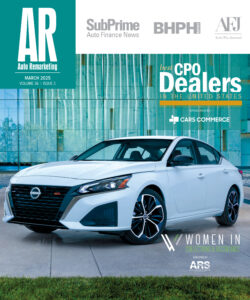ALG Offers a Look Into Rocketing Leasing Penetration, Residual Trends and More

SANTA BARBARA, Calif. -
Word on the street is that leasing penetration is soaring, and ALG recently offered some analysis to back this up. Just what did the company discover?
Looking at lease penetration, ALG reported it has reached its most robust level in two years during the third quarter and almost surpassed 20 percent.
Breaking it down, ALG said mainstream brands have made longer strides than luxury counterparts.
Specifically, the six-month moving average lease penetration for mainstream brands was at 16 percent, a gain of about 6 percentage points from October 2009, ALG noted.
Meanwhile, luxury brands showed lease penetration of about 40 percent in the third quarter, a gain of roughly 5 percentage points.
“Domestic mainstream brands have revived leasing in the post-bankruptcy period, whereas Toyota and Honda have clearly stepped up leasing efforts in 2010 compared to prior years,” analysts noted. “The recovery in the lease penetration has been a helpful tool to generate sales in the luxury fold.”
In fact, ALG — citing Autodata Corp. — shared a table of year-to-date sales for 11 luxury brands. Of that crowd, 10 brands have shown year-over-year improvement and seven are up double-digit percentages.
ALG went on to note that residual outlook has been lifted the following factors: the majority of luxury brands (besides Acura) have cut their average incentive spending; the economy is rebounding; off-lease supply is down and 24-month lease strategies are being employed.
“Thus, the driving force behind the sales increase and recovery in the lease penetration is primarily the growth in the market coupled and not so much elevated lease incentives,” officials noted. “Lease payments for 36-month leases are currently hovering around $700 to $800 on average for the German import brands, whereas the Asian imports (Acura, Infiniti) are trending at $500 on average.
“ALG anticipates that the luxury brands will emphasize their leasing efforts more on optimizing residual/resale value performance than pushing new market sales through highly subsidized leases in the near future,” they added.
Residual Outlook
Continuing on, after delving into the impacts the housing market, gas prices and the labor market are likely to have on residual values, ALG summed up what it contends will be the effect from those factors.
It noted: “In total, the forecast changes explained above have a residual value impact ranging from ±1 percentage point versus the previous edition depending on a vehicle’s sensitivity to gas prices and housing prices.”
Typically, the declines in the most recent report were from 1 percentage point to 2 percentage points, officials noted. Normal depreciation and the typical seasonal slowdown that occurs between the September/October and November/December edition is the cause of this 1- to 2-percentage point drop.
“Vehicles with higher normal depreciation will show larger declines for this category,” ALG explained.
Therefore, the range for total declines in the latest report was zero to 3 percentage points.
Looking forward, the declines are expected to soften greatly in the January/February report, thanks to positive movement that occurs during that season, ALG explained.
“Normal depreciation plus a positive seasonal adjustment will amount to 1-1.5 percentage points,” officials stated. “ALG is closely monitoring economic information relating to the labor market, the Blue Chip Economic report increased its 2011 unemployment outlook from 9.1 percent to 9.3 percent in September, and if other forecasters follow suit this would result in a lower outlook for wage growth,”
What could be an issue, as well, are fuel costs. The U.S. Energy Information Agency’s short-term projection for 2011 has been trimmed to $2.90/gallon, down from $2.92 previously.
ALG said it is carefully examining forecasting sources. It added that “changes in the outlook may be reflected in the January/February edition.”
Brand Perception Trends
Next up, shared it Fall 2010 Perceived Quality Study and taking the top spot among mainstream brands is, once again, Honda, while Mercedes-Benz continued to lead the way for luxury brands.
Specifically, Honda had a Perceived Quality Score of 81.4, while Mercedes-Benz was at 83.9.
On the mainstream side, though Honda is still tops by a wide margin. Meanwhile, Toyota made significant improvement (up 5 percent to 70.7) in its PQS score from the spring edition. It moved up to No. 2 after being ranked No. 6 in the spring study.
Rounding out the top five on the mainstream side were Ford Trucks (69.9), Nissan (69) and Subaru (68.9), respectively.
Looking at luxury brands, Lexus was second (81.9), BMW placed third (81.6) and Porsche was fourth (80.2). Coming in at No. 5 was Acura (77.4).
As far as improvement from the spring, Dodge Cars, which showed a 4-percent gain, and Jeep (3-percent improvement) joined Toyota as the leaders for mainstream brands.
Jaguar moved ahead 5 percent. However, ALG emphasized the brand still has a “relatively low” PQS (62.4)
“The significant recovery for Toyota, which saw a dramatic 20-percent PQS drop in spring 2010 due to quality issues and massive recalls, can be attributed to marketing around vehicle safety, strong customer loyalty and good service,” stated Eric Lyman, OEM practice director at ALG.
“At Jaguar, recent design transitions have fostered a stronger emotional connection with the consumer, leading to an improvement in the perception of the brand,” he added.
ALG rolled out the PQS in spring 2008.
In the two-and-a-half years since, Ford cars have shave shown the most improvement in perceived quality (up 36 percent) and Ford trucks are next on the list at 27 percent.
Hyundai (up 19 percent), Kia (13 percent) and Jaguar (10 percent) round out the top five for improvement. Meanwhile, Toyota (down 17 percent) has shown the greatest drop-off since spring 2008.
Saturn has has seen the second-heaviest decline, followed by Saab (11 percent), Lexus (7 percent), Scion (6 percent) and Volvo (4 percent).

 View The Latest Edition
View The Latest Edition

